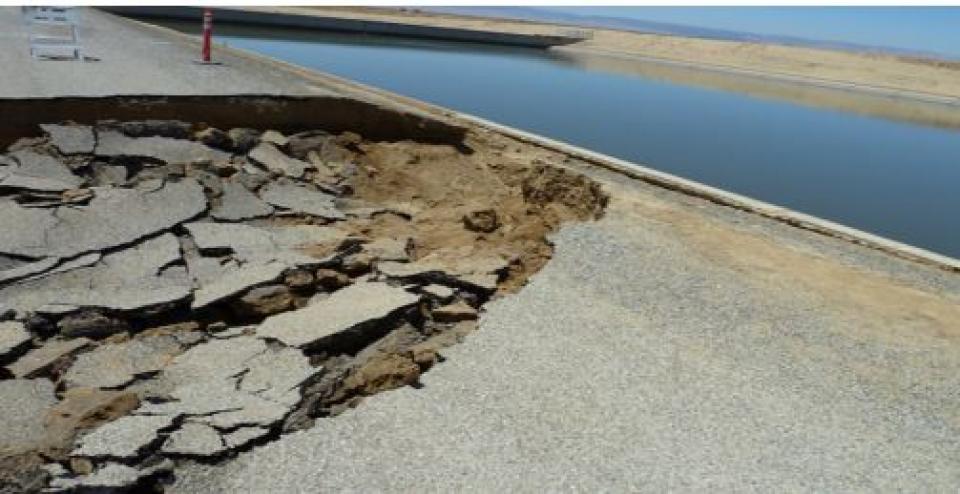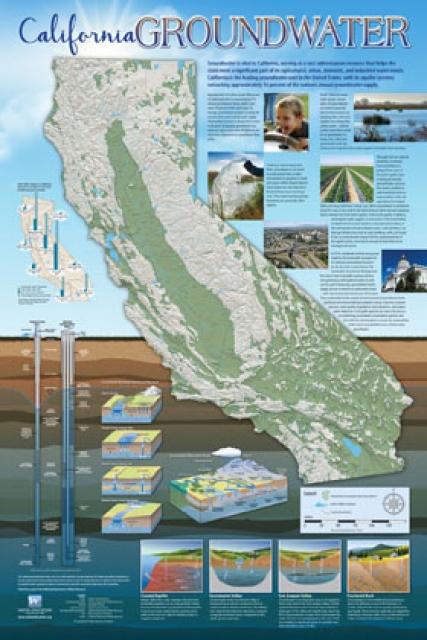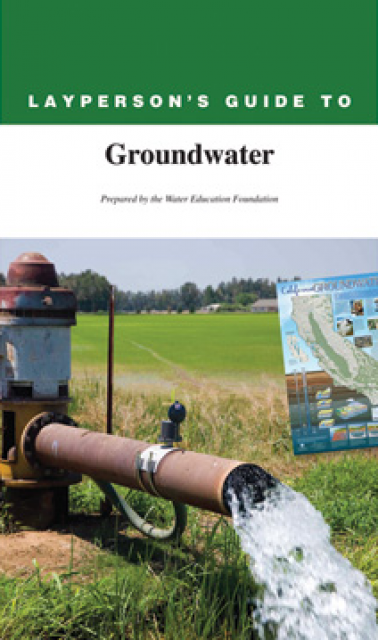Land Subsidence
Land subsidence is the lowering of the land-surface elevation due to changes that take place underground.
Throughout California, subsidence has damaged buildings, aqueducts, well casings, bridges and highways. Common causes include pumping water, oil or gas, dissolution of limestone aquifers known as sinkholes, drainage of organic soils and initial wetting of dry soils, according to the U.S. Geological Survey.
As the land sinks, flooding problems are aggravated. Subtle changes in land gradient can adversely impact sewer lines and storm drainage. In all, subsidence has resulted in millions of dollars in damage.
In general, the groundwater system responds to the climate. In wetter periods, water goes into storage, while in drier periods, or droughts, water is removed from storage.
Long-term overdraft or excessive pumping of a groundwater aquifer, can also result in subsidence and sinking ground surface.
During normal, wet winters, lands with elastic, sandy soils tend to bounce back, but in areas with clay layers, the amount of water layers can hold is permanently reduced once water is withdrawn. It is often a concern in dry years as more groundwater is extracted.
Land Subsidence Hot Spots
Subsidence was a widespread problem in California earlier in the 20th century – when pumping technologies had developed enough to increase production, but before surface water systems were developed to meet growing water demand.
Some of the greatest subsidence in the state occurred in the Long Beach area during the 1940s and 1950s as the result of oil production. By 1951, the rate of subsidence exceeded two feet per year and total subsidence reached as much as 29 feet in the center of the subsidence bowl. In the 1950s, the city of Long Beach determined that water injection would repressure the oil formations and stop the surface subsidence.
Half of all of the subsidence that has occurred in the United States has occurred in California.
The most severely affected areas were in southern and western portions of the San Joaquin Valley as irrigated agriculture expanded. Between 1925 and 1977, land near Mendota sank by nearly 30 feet. By the 1950s a broad area down the west side of the valley to Kettleman City in Kings County sank by up to 25 feet, and on the eastern side of the valley, Tulare and Wasco area farms sank 12 feet. At the extreme southern end of the valley, the ground sank 8 feet. Even in the wetter Sacramento Valley, in the Zamora and Knights Landing areas of Yolo County, the land sank by 4 to 6 feet. Portions of the Antelope Valley near Lancaster, northeast of Los Angeles, have sunk by 6 to 8 feet from 1930, according to USGS.
Also, urban development in the Mojave Desert and Antelope Valley has increased groundwater extractions to the point that the land has begun to sink and fracture. At Edwards Air Force Base, where the space shuttle used to land and the military has tested airplanes for decades, one of the largest fissures – 12 feet deep, 4 feet wide and 2,000 feet long – took a runway out of service and raised questions about the integrity of the dry lake bed that is used in base operations.
The pace of subsidence slowed until the 1987-93 drought, when increased pumping demands on the aquifers reduced the water table in the Central Valley by as much as 100 feet. Portions of the San Joaquin Valley began to sink again – by 8 feet in some areas. For some water managers, these drought-related events are an indication of long-term problems. In 2009, after years of drought, USGS published a study noting once again drought conditions had caused groundwater pumping to increase, and groundwater levels were approaching their historic lows, leading to more concerns about subsidence.
A 2017 subsidence report by the Jet Propulsion Laboratory identified two known main subsidence bowls in the San Joaquin Valley: the larger centered on Corcoran and extending 60 miles to the northwest, affecting the California Aqueduct. Between May 2015 and September 2016 maximum total subsidence was found to be about 22 inches near Corcoran. A second bowl is centered on El Nido and is approximately 25 miles in diameter, encompassing most of the East Side Bypass.
Subsidence impacts the Friant-Kern Canal, which is sinking so much that it has lost about 60 percent of its flow. The 152-mile canal from Millerton Lake to Kern County was built in the 1940s. It has sunk two to three feet in some places over about a 25 mile area. The original design capacity 4,000 cubic feet per second in that area has dropped to 1,600 cfs.












